The Six Best Slider Plugins for WordPress
- By
- Last updated:
- Leave your thoughts
It’s no coincidence that the vast majority of WordPress themes support some form of image slider functionality straight out of the box.
But why is this? Why have site owners and internet users gone image slider-crazy?
In my opinion, it’s a matter of first impressions. Images are far more engaging to look at than text, and the moving parts of an image slider make a website feel more dynamic and interactive. If you make a killer first impression, visitors are more likely to spend time on your website, read your content, and buy your products — awesome, right?
Image sliders can do more than just display pretty pictures, though. The top image slider plugins offer a truly interactive experience for your visitors, and can be used in a number of ways, such as improving navigation by linking to top content, playing videos and even integrating shortcode functionality from your other plugins.
Whatever your reason for wanting an image slider plugin, WinningWP has your back. I’ll be running through six of the best WordPress image slider plugins, and, to appeal to all budget levels, I’ll include a mixture of free and premium options.
All of the sliders featured in this post are fully responsive, which means they’ll look stunning on any size device.
Soliloquy — FREE/$19-Plus
Soliloquy is a popular responsive slider solution for WordPress that offers more than ten slider types, including carousel, featured content, lightbox, video, Instagram, Pinterest, PDF, WooCommerce, thumbnail and more.
The lite version of Soliloquy can be used to create a standard image slider. Once you’ve uploaded some images, you can organise them using drag and drop. There’s an edit icon for each image, which loads up options to define the image title, alt text, caption and URL. You can then insert your slider into your website using shortcodes, or into templates using PHP code.
In the slider options area, you can select one of two themes, define the size of slides and choose the transition speed between slides. Most other settings in the slider page are reserved for slider types that are only in the premium version of Soliloquy, so are restricted.
You need to upgrade to the full version of Soliloquy to unlock restricted features. There are four license options, priced at $19, $49, $99 and $249.
The $19 personal license adds support and lets you customise slides using CSS. You need to jump up to the three-website multi-license at $49 to unlock slider templates, image protection, support for Instagram and Pinterest, and the ability to schedule slides. A themes addon is also included.
The developer license at $99 increases support to 25 websites, but, more importantly, it includes all plugin features. This includes slider types, such as carousel, lightbox, featured content, WooCommerce, PDF and thumbnails.
The agency license at $249 adds client management and support for WordPress multisite. It also gives support and updates for an unlimited number of websites.
While Soliloquy Lite does have some useful features, I believe there are better free alternatives on the market.
Soliloquy Pro is significantly better. It’s a versatile solution with many different slider types, and boasts additional features, such as preventing users from downloading images. Unfortunately, you do need to upgrade to the developer license at $99 to get access to all of the plugin features.
Check out our full review of Soliloquy to get a better understanding of what the plugin can do.
MetaSlider — FREE/$39-Plus
MetaSlider is a responsive WordPress slider plugin that’s compatible with the new WordPress Editor (Gutenberg). It also has touch support, has been optimised for search engines, and works with WordPress MultiSite and popular translation WordPress plugins.
The developers have been really generous with the free version of their plugin — you can display images in a flex slider, responsive slider, nivo slider and coin slider. The width of each slider can be defined too, and you can select from multiple transition effects.
Images can be moved around using drag and drop, and you can easily add captions, alt text, and titles. The crop position of the image can be defined too, and the look of your slideshow can be adjusted using one of 14 available themes.
Once everything has been configured, you can insert the slider into your website using a shortcode or PHP code.
Upgrading to the pro version of MetaSlider will give you access to CSS3 animated slides, thumbnail navigation, post feed slides and video slides (YouTube and Vimeo — Yay!). It also offers HTML overlays and a live theme editor.
You’ll be happy to hear that MetaSlider has a sensible pricing policy, with each license giving you the full version of the plugin. The only difference is how many websites are supported.
It’s $39 for a two-website license, $59 for five websites, $89 for 25 websites and $149 for an unlimited number of websites. All licenses come with a money-back guarantee, as well as one year of support and updates.
There’s a lot to love about MetaSlider. The free version comes with four slider types, 14 theme designs and dozens of configuration options. This may be sufficient for many of you, but you can unlock all plugin features for only $39.
If you decide to use MetaSlider, you may want to consider upgrading to get video support, HTML overlays and thumbnail navigation.
Smart Slider 3 — Free/$35-Plus
I’m a big fan of Soliloquy and MetaSlider, but when it comes to user-friendliness and presentation Smart Slider 3 takes everything to the next level.
The plugin gives you access to a library of templates that can be used as a starting point for your slides. In the free version of Smart Slider 3, you have access to 11 templates, but if you upgrade to the Pro version you’ll get access to more than 180.
You’re not limited to images when creating slides — videos, blog posts and static overlays can all be added. Posts can also be inserted dynamically based on filters you define. For example, you can insert posts based on post format, tags, categories and other variables.
The slider configuration page in Smart Slider 3 is impressive. You’re given full control over every aspect of your slider — right down to styling elements, such as arrows, bullets, thumbnails and more.
In addition to defining the size of your slides, you can adjust animations, alignment and the way slides are loaded. Other cool features include touch support, image optimisation and background image support.
Smart Slider 3 Pro adds 11 extra layer types, layer animations and four new slider types — carousel, block, full page and showcase. You also get access to the full Smart Slider 3 template and slide library, which will greatly reduce the time it takes to create professional slides.
Dynamic content is expanded in the Pro version too. In addition to content from your own WordPress website, you can access more than 35 online sources, such as Joomla, Flickr, Instagram, YouTube, WooCommerce and more.
A single license for Smart Slider 3 Pro costs $35 for one website, $150 for ten websites and $250 for unlimited websites. Each license will unlock all Pro features — the only difference is the number of websites that receive support and updates. If you don’t want to jump up to a higher price plan, you can acquire support for additional websites for just $20 per domain.
Smart Slider 3 is easy to recommend. The free version may be limited to one style of slider, but it makes up for it in other areas such as customisation and access to a template library.
With the Pro version being available from only $35, I’d encourage you to consider upgrading. It will give you four more slider options, access to hundreds of pre-made slider templates and slides, and allow you to import content from dozens of sources.
Slider Revolution — $26
Launched in 2012, Slider Revolution is by far the biggest selling WordPress slider plugin on CodeCanyon, and is frequently packaged with WordPress themes on ThemeForest.
You can create slides using a modern visual editor, which allows you to insert images and videos and create multiple layers of content. Fonts, animations, backgrounds, icons, colours and more can all be edited easily.
Animations are one of the stand-out features of the plugin. These can really bring your slides to life, and there are a lot of presets to make the task simple.
More than 200 pre-made templates are available — they make sliders look amazing, and most only need a few tweaks to customise as your own. You also gain access to hundreds of images, videos, animations, icons and pre-made layer groups.
There are more than 20 addon effects too, including particles, distortion, paintbrush and reveal. The before and after effect look fantastic as well.
At only $26, Slider Revolution offers amazing value for money and can be used to create a variety of slide types.
It’s one of the most advanced slider solutions on the market, and its huge media library of templates, images and icons simplifies the process of creating professional slides.
Layer Slider — $25
Another professional slider solution that was released in 2012 is Layer Slider. It’s the second best-selling WordPress slider plugin on CodeCanyon, and is also included with many WordPress themes on ThemeForest.
The Layer Slider editor lets you create and edit slides using drag and drop. Layers can be copied and pasted, and there’s an image editor powered by Adobe Creative Cloud. More than 200 animated transition effects are available including looping, filter transition and parallax.
A large collection of pre-made slides are available in Layer Slider, and certain designs have been created specifically for devices such as mobile phones.
One feature Layer Slider has expanded on in recent years is pop-ups. You can use the plugin to create professional pop-ups with slides, which few WordPress pop-up plugins can do.
Another great feature is revisions. Layer Slider is constantly saving your slides and, with the addition of undo and redo, you never have to worry about losing your work.
Layer Slider is rightly regarded as one of the best WordPress slider solutions on the market, and, at only $26, it gives tremendous value for money.
Check out the official sales page to get a better appreciation of how professional the included templates are.
Slide Anything — FREE/$10
Our final choice is responsive, touch-friendly Slide Anything.
This WordPress plugin tackles slides in a completely different way. Rather than uploading images and videos directly, you edit slides using the WordPress Editor. This means you can effectively add anything into slides, whether it be images, videos, tables or headers. Shortcodes can also be inserted into slides, which means you can easily integrate content from other WordPress plugins you’ve installed.
The developers have been really generous with the free version of Slide Anything and restricted few features.
Slides are displayed in the heart of the page underneath transition effects and other slider settings. At the right-hand side of the page, there are options to define how many items are displayed on particular devices, and you can also customise the style of your slider here.
Slide Anything Pro costs a one-off fee of $10 for a single license, while a five-website license is available at $30, and an unlimited license at $100.
Upgrading will unlock the showcase carousel and thumbnail pagination features that are restricted in the free version. It also adds pop-up functionality, which can be used to display an image lightbox, videos and more.
Not everyone will like using the WordPress Editor to create slides, but Slide Anything’s approach opens up lots of possibilities for creating advanced slides that other solutions can’t offer.
Most features are available in the free version of Slide Anything, but, at $10, it’s not expensive to upgrade and expand functionality.
Honourable Mentions
During our research, we came across many useful WordPress slider plugins that just missed our list. I’d like to share some of the best with you.
Crelly Slider is a responsive slider solution that lets you create slides with layers. Text, images and videos can all be added to slides using a drag-and-drop slider builder.
If you’re looking for a simple slider solution, you may like WP Slick Slider and Image Carousel. Slides are created using the WordPress Editor, and there are no settings in the plugin, as everything is configured using shortcodes. Its simplicity will frustrate some people, but I think the actual slider looks great.
Those of you who are primarily looking to display videos on your website should check out Video Slider, which displays videos in many different slide types, such as carousel, timeline and thumbnails.
My final recommendation is Master Slider. It features more than 90 pre-made slide designs, an advanced drag-and-drop slider editor, touch support, animated layers, transitions and more.
The plugin was in our original list of the best WordPress slider plugins, but, since the free version of Master Slider hadn’t been updated in around a year, we chose to feature slider plugins that were updated more regularly.
Final Thoughts
Image sliders can be used in a number of ways, and the plugin you choose will depend on your requirements. If your budget allows, though, I’d go for one of the premium options.
Why? Because the premium options all come loaded with truly impressive functionality, offer excellent support and a user-friendly interface, and are (usually) lightning quick.
If you’re still unsure of which to choose, I recommend looking at each plugin’s demo. Because image sliders are dynamic, it’s difficult to do them justice using a static screenshot. Every plugin featured on this list comes highly recommended, so check a few of them out and see if one of them catches your eye.
Used any of these image slider plugins? Which do you think is best?

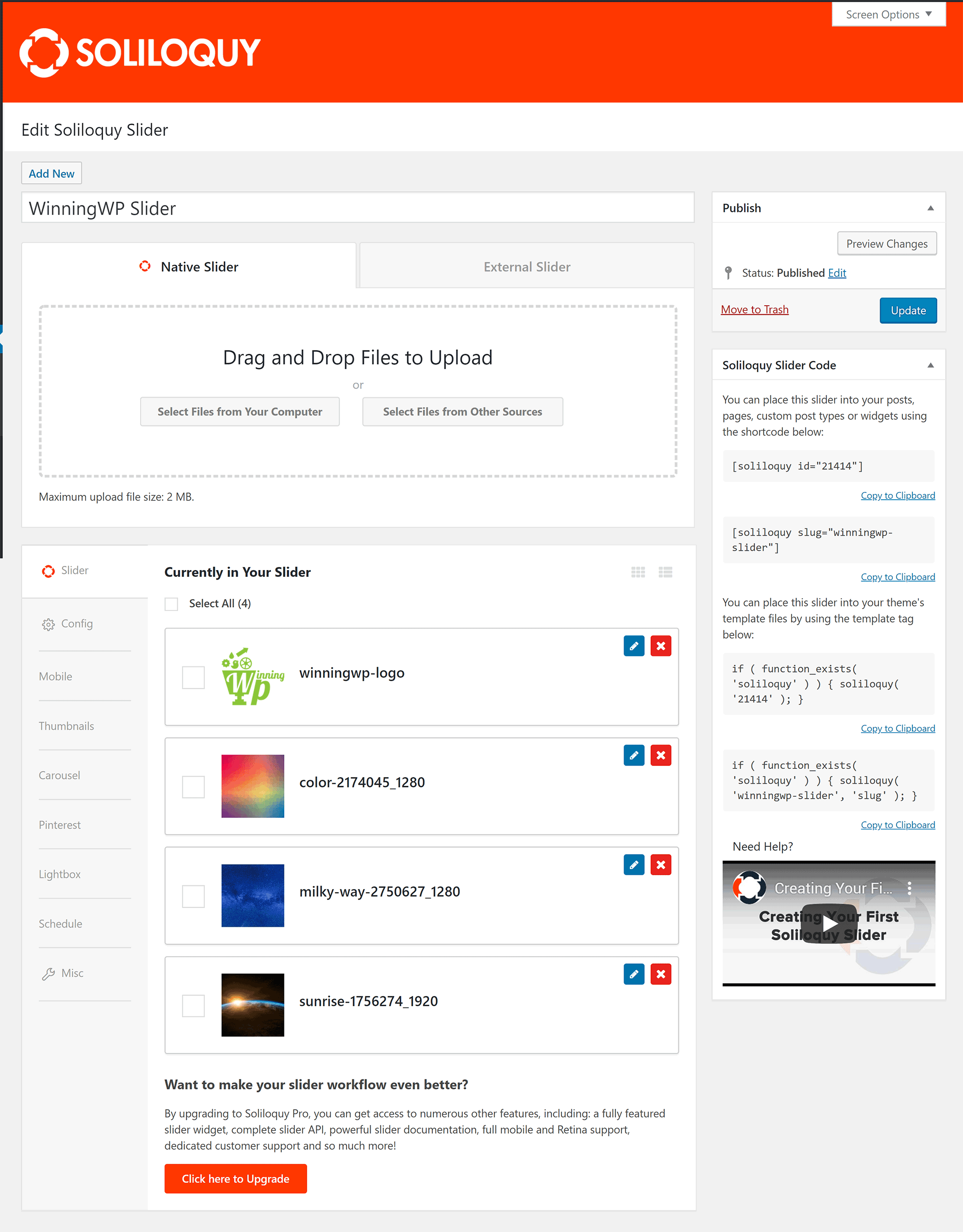

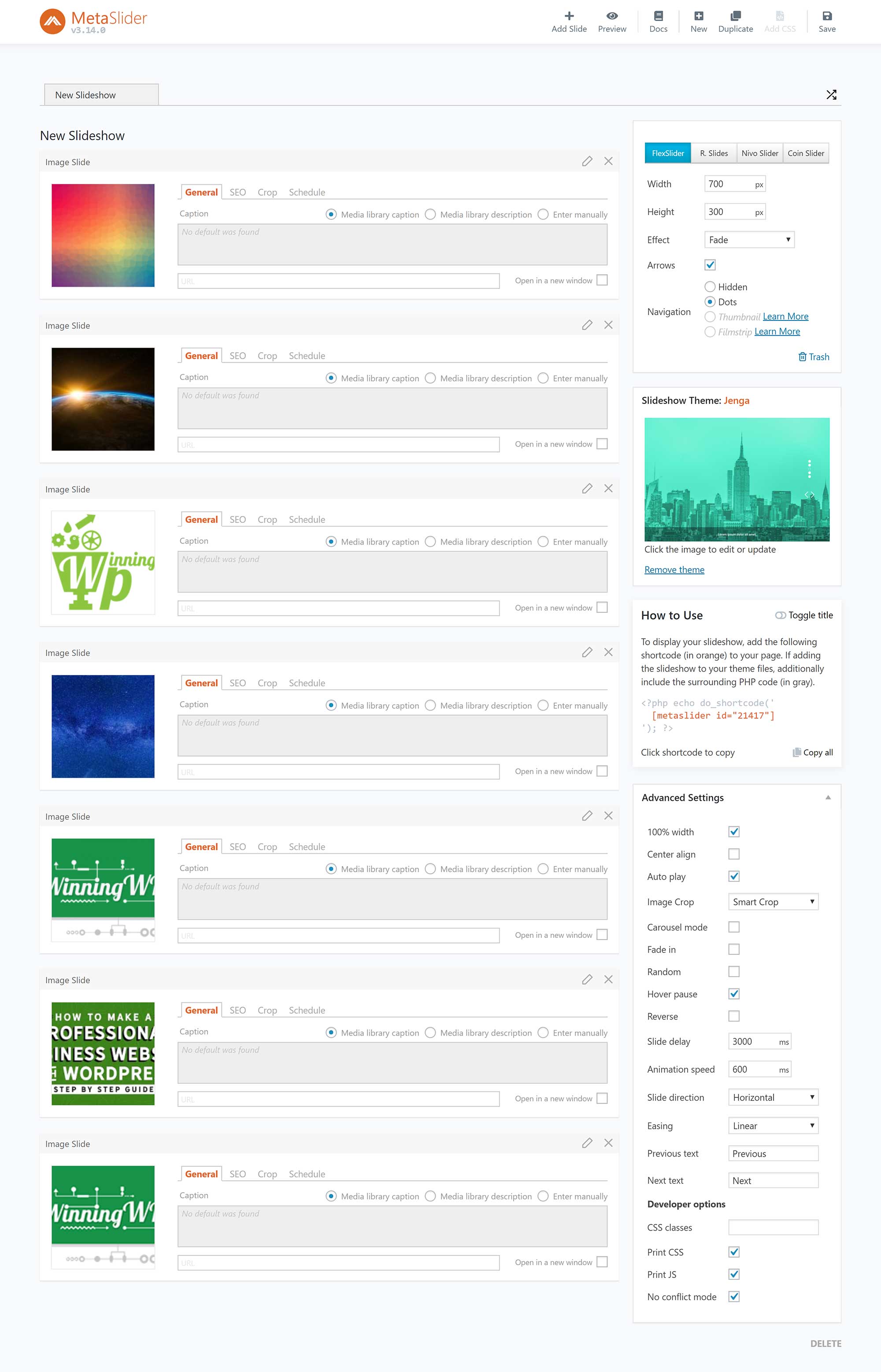

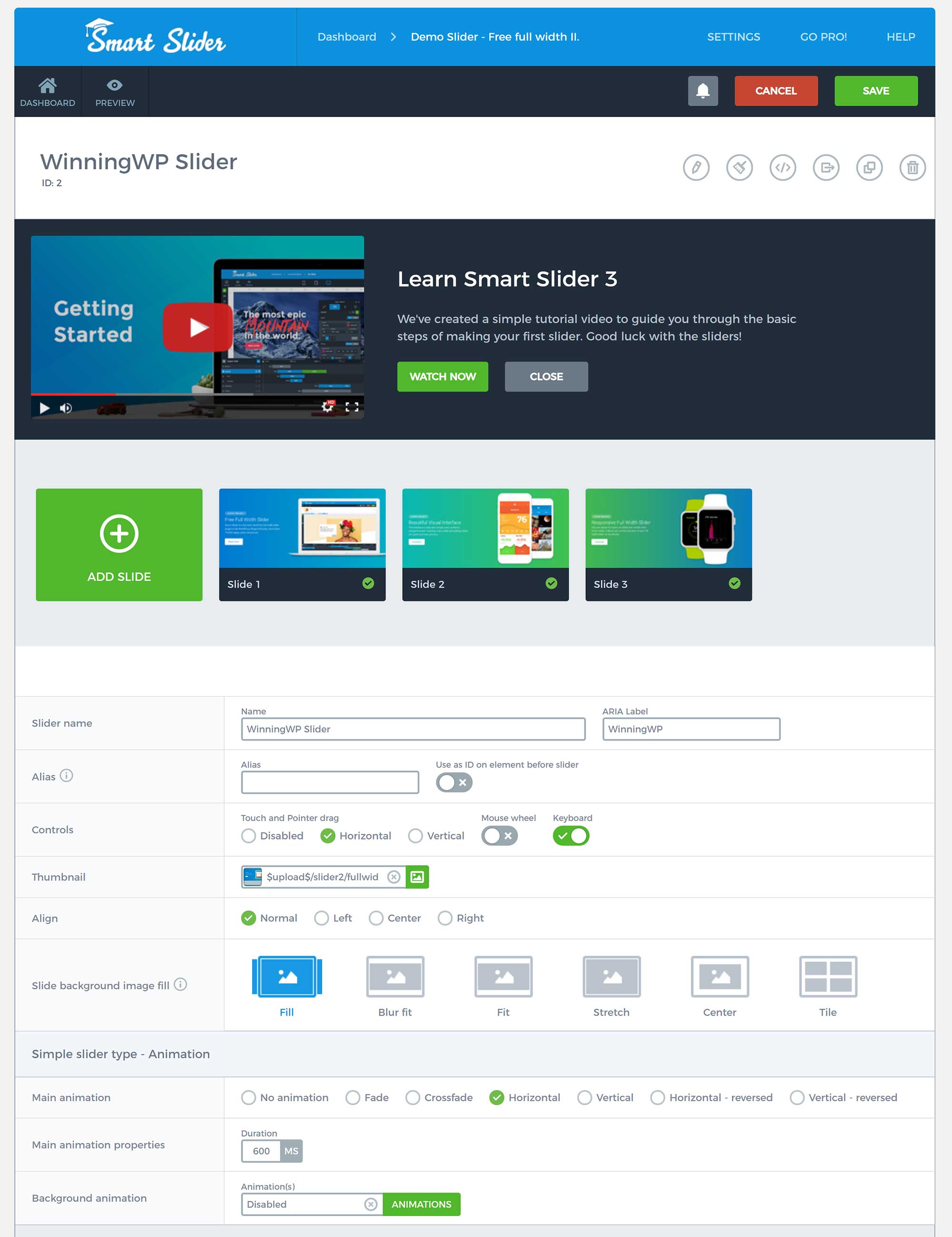

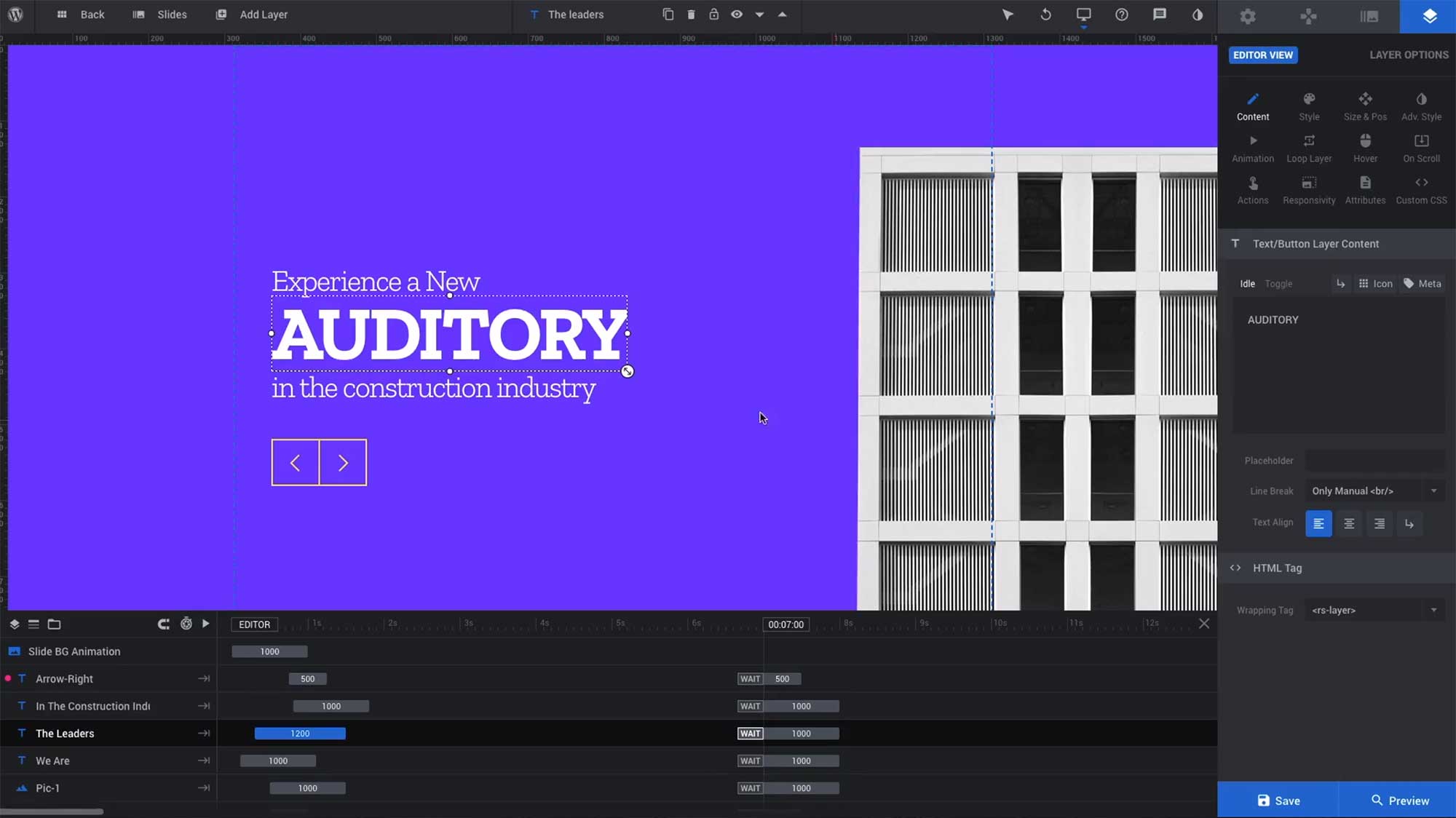
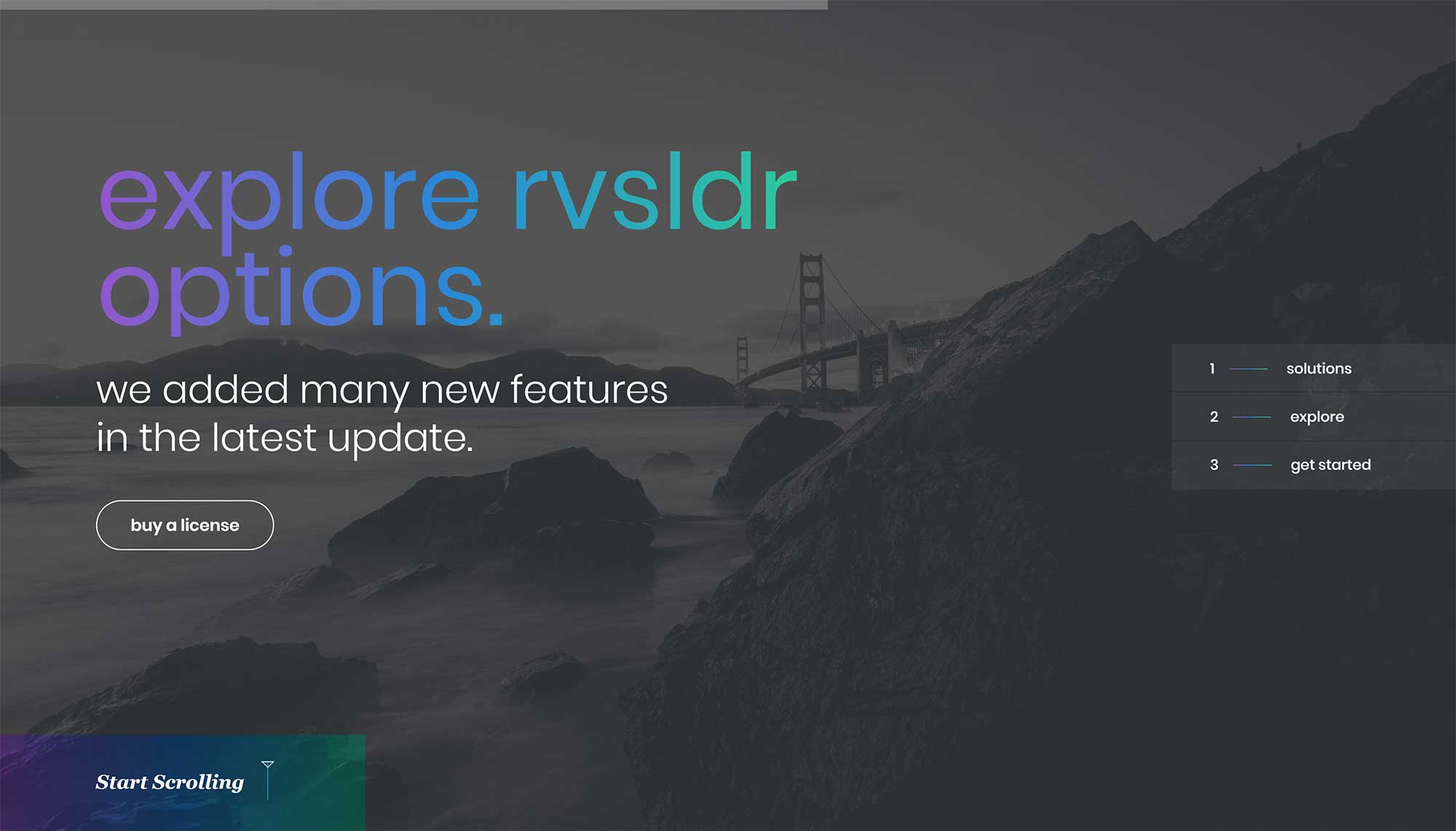
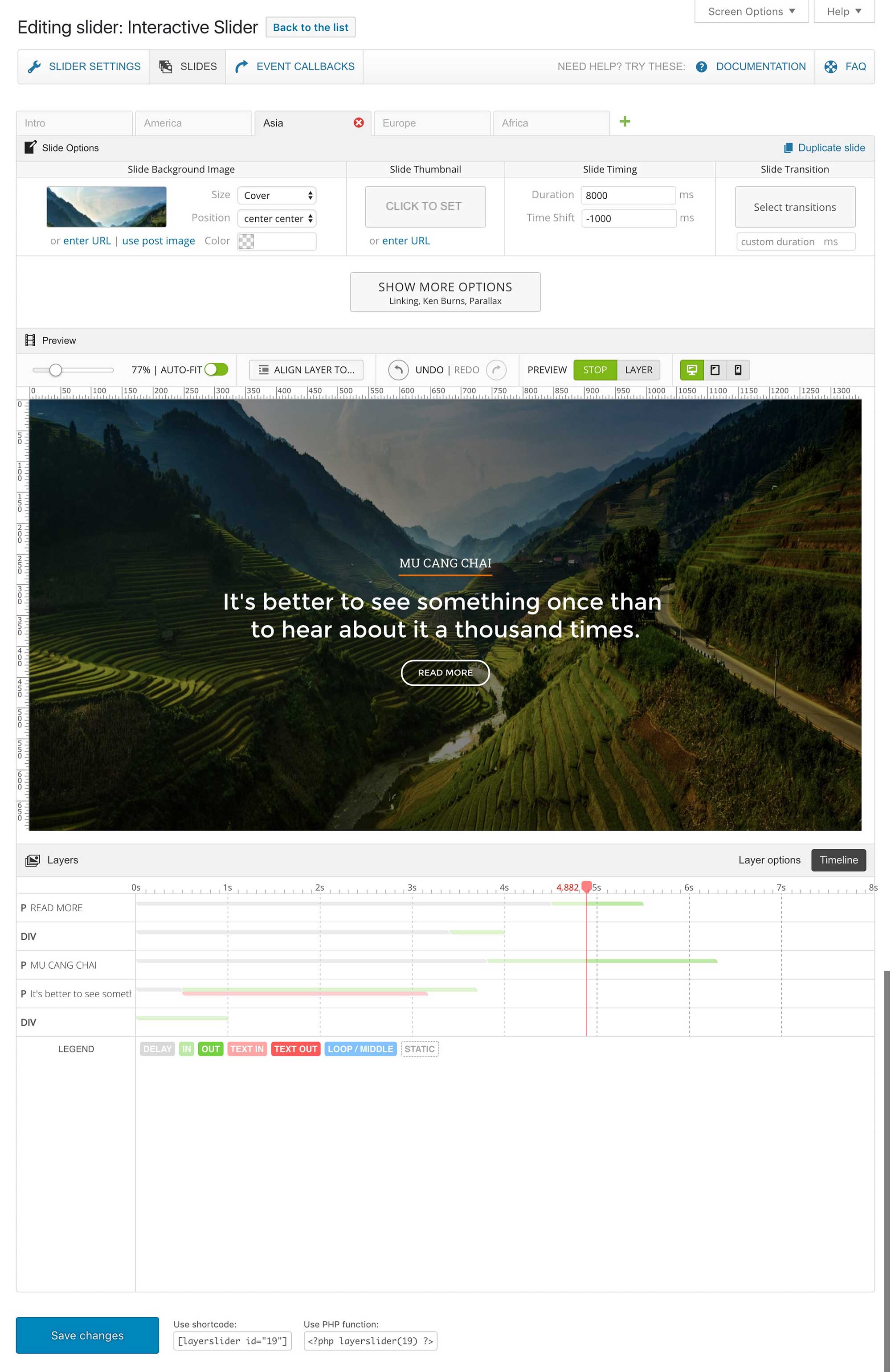

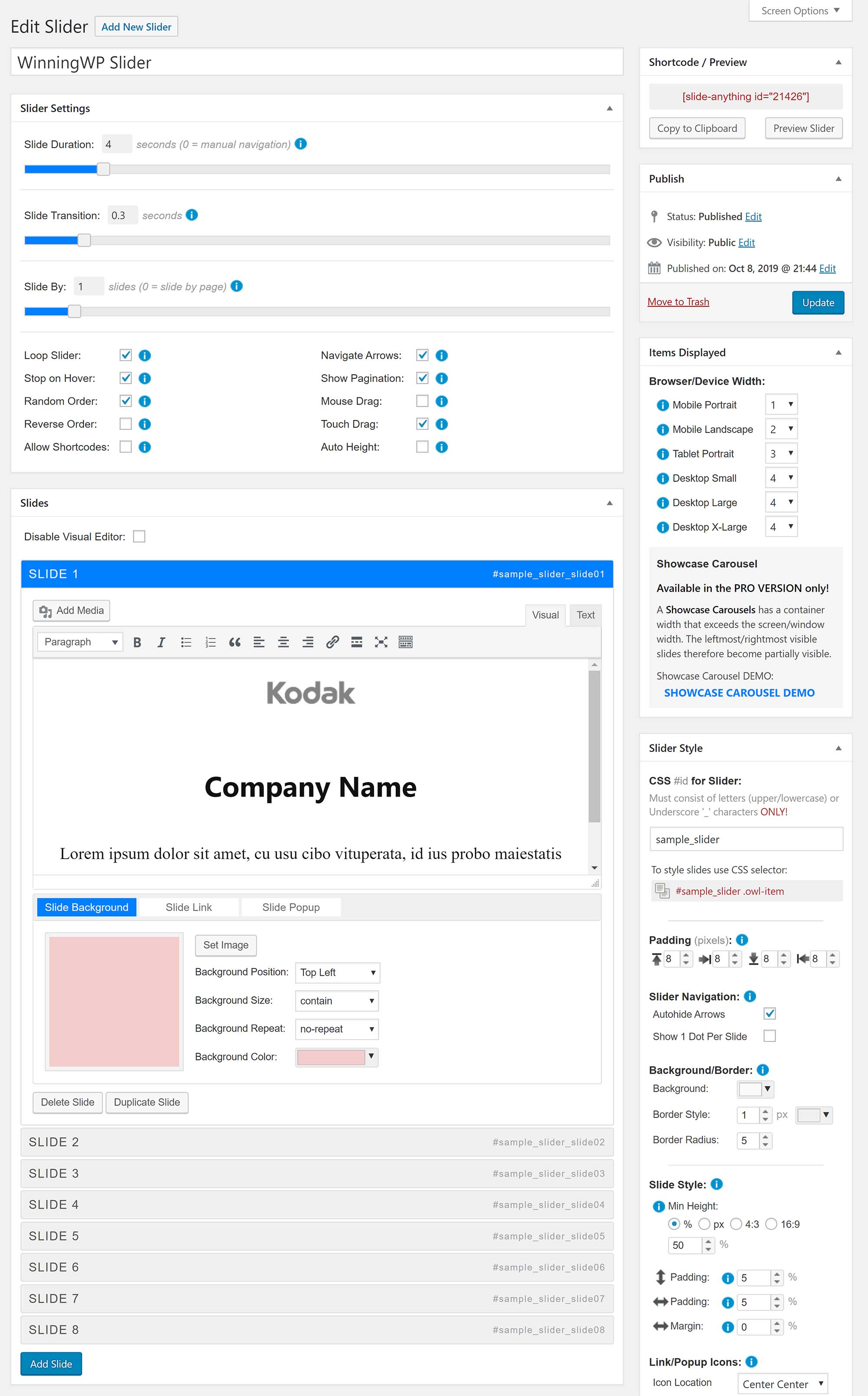
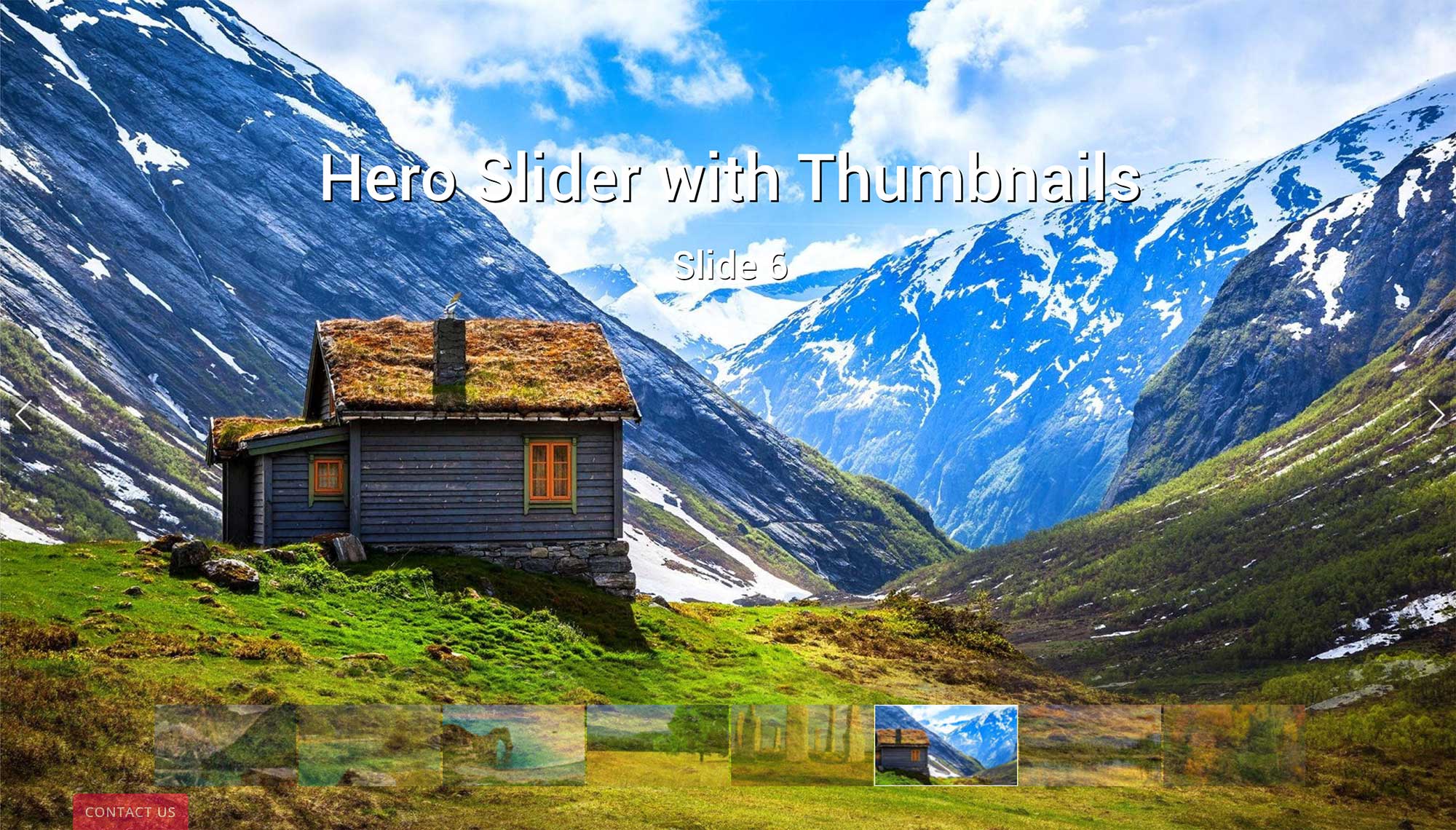




All comments are held for moderation. We'll only publish comments that are on topic and adhere to our Commenting Policy.